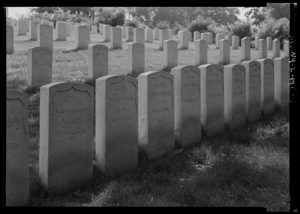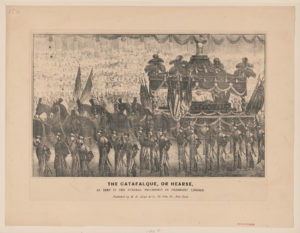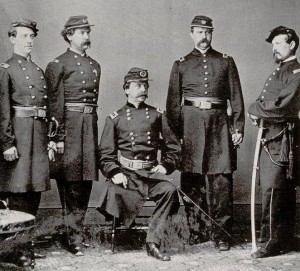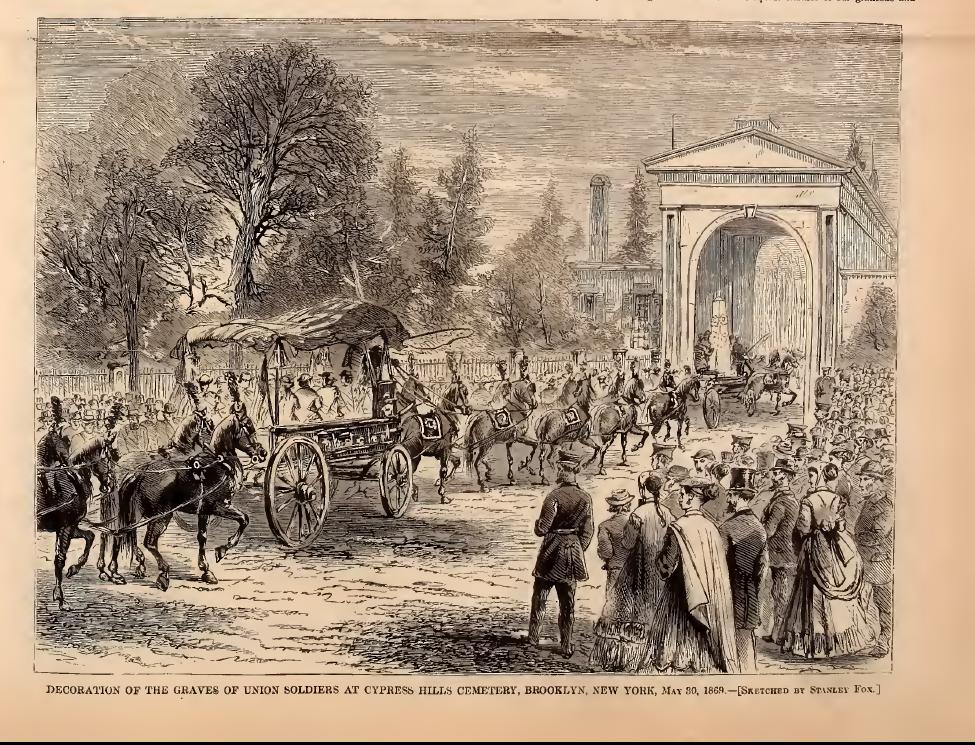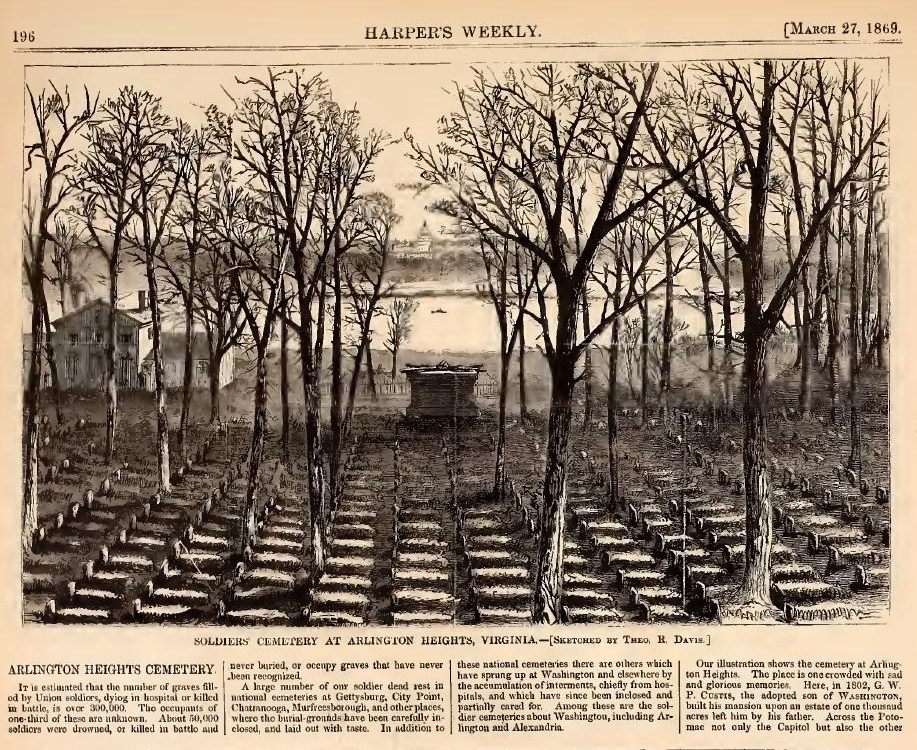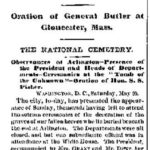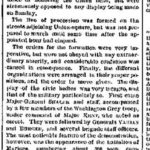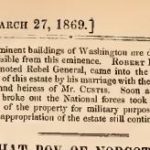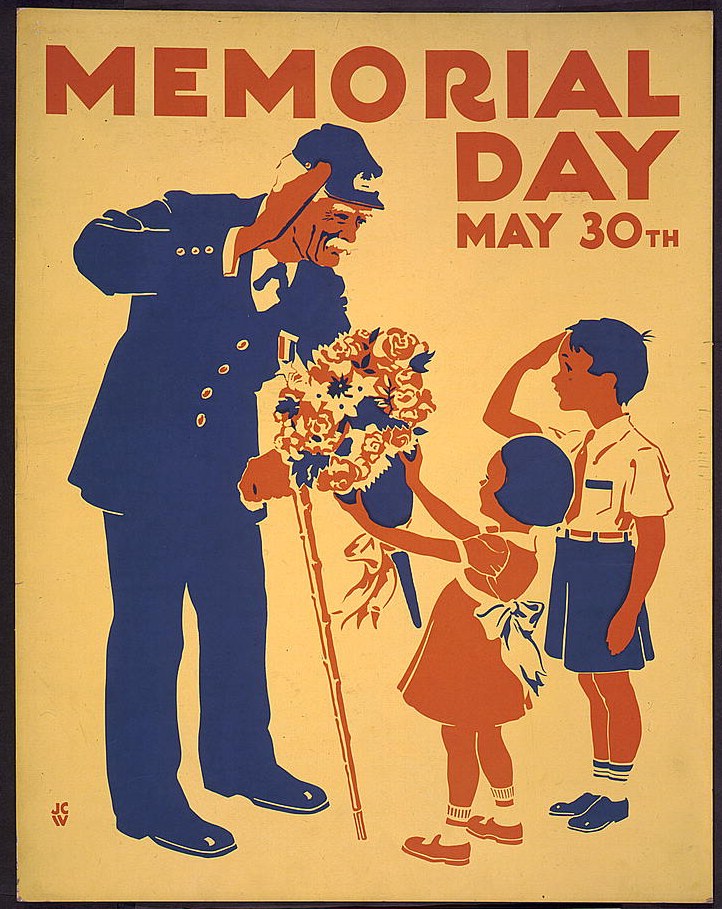150 years ago today a large procession traveled from Manhattan to Brooklyn to honor the memory and decorate the graves of thousands of soldiers who died during the American Civil War.
From the June 19, 1869 issue of Harper’s Weekly:
DECORATION EXERCISES AT CYPRESS HILLS CEMETERY.
The day appointed for the decoration of the graves of Union soldiers (May 30) was universally observed. We give on this page an illustration of the decoration at Cypress Hills Cemetery, Brooklyn, New York. The procession started from Union Square in this city about noon. The First Division was headed by Major-General ALEXANDER SHALER and his staff, mounted, which comprised four companies of United States Marines, accompanied by their famous band, under the command of Lieutenant-Colonel BROOME; a squad of the Washington Gray Troop, commanded by Major KENT, and a troop of the Third Cavalry. Following up the rear of the division was General VARIAN and General BURGER, accompanied by several officers of their staffs. In the Second Division, seated in carriages, were the officers of the Memorial Executive Committee, and the orators of the day, Major-General DANIEL E. SICKLES and Grand Commander Colonel EDWARD B. LANSING. The catafalque used at the obsequies of President LINCOLN, decorated with flowers in monumental form, was drawn by eight white horses furnished by Dodd’s Express Company. Seventy-five boys of the Union Home and School, orphans of deceased Union soldiers, were in uniform, under the command of one of their own number. Fifty girls from the same school were in three of the large Erie Railroad express wagons, which were handsomely decorated with flags and bunting. One of the wagons was drawn by ten black horses. There were also two wagons filled with flowers.
For a long time before the head of the procession reached the portals of the cemetery the grounds were alive with people. Many had brought carriage-loads of flowers with them to decorate the graves. Many who had come afoot brought their modest floral offerings too, and more than one narrow grave was beautifully decked long before the hour for the ceremonies had arrived.
When the different organizations composing the procession had been properly disposed about the mound overlooking the soldiers’ graves, the services were opened by the singing of a hymn. After which a prayer was offered by the chaplain of the G.A.R., and a beautiful hymn sung by the soldiers’ orphans from the Union Home at Carmansville.
General SICKLES then advanced and addressed the assemblage. He said: “We stand where more than 3,000 soldiers of the Republic are buried. We come to scatter upon their graves the mute but eloquent tributes of our gratitude and affection. We bring with us the standards under which many of them fell – and here, too, are many of their children, whom it is our duty to care for and to cherish. Soldiers are here, merchants, men in all walks of life, all united to-day in asserting their sympathy for the object which has called us together. Our Memorial-day is of special interest to us, whose comrades lie buried here. We mourn the loss of friends who have fought side by side with us, our tears bedew the flowers we lay upon their quiet graves, but our grief is mingled with the pride we feel when we think of the noble services of those who did not die in vain when struggling to aid in the salvation of our country. The magistrate who enforces the laws, who wields the sword of justice to the end that the welfare of society may be preserved, is a benefactor; but the men who fill these graves are greater benefactors by far. They fought that the laws might be observed. They gave up home and life for country, and we enjoy to-day the fruits of their exertions, and may we ever hold them in grateful remembrance.
General SICKLES closed with an eloquent appeal in behalf of the soldiers’ orphans, claiming that their can be no more graceful or grateful service than to care for these children of the Republic, whose fathers died that the Republic might live.
The following is the hymn sung at the opening of the exercises:
Love unchanging for the dead,
Lying here in gloried sleep,
Where the angels softly tread,
While their holy watch they keep.
Wreaths we bring that ne’er shall fade,
Greener with the passing years,
Brighter for our sorrow’s shade,
Jeweled with our fallen tears.
Dying that the truth might live,
Here they rest in Freedom’s name,
Giving all that man can give –
Life for Glory’s deathless fame.
Bend in love, O azure sky!
Shine, O stars! at evening-time!
Watch where heroes calmly lie,
Clothed with faith and hope sublime.
God of nations bless the land
Thou hast saved to make us free!
Guide us with thy mighty hand,
Till all lands shall come to THEE!
Nowadays the ceremony at Cypress Hills seems to have been solemn and appropriate, but at the time it was somewhat controversial. According to the May 31, 1869 issue of The New-York Times, The Procession A Failure. Many people opposed parading on Sunday:
The Procession.
The parade yesterday was not the gorgeous or imposing pageant which it was generally expected to be, owing in a considerable measure to the unpleasant aspect of the weather, which probably deterred many persons from participating in it. A better reason may be found, however, in the injudicious determination of the Memorial Committee to conduct the ceremony in defiance of the expressed wishes of a large number of Sabbatarians and prominent private citizens, who willingly recognized the importance of honoring the Union dead, but were strenuously opposed to any display being made on Sunday. …
A day earlier the same newspaper reported that Decoration Day at Arlington, attended by President Grant and with ceremonies at the “Tomb of the Unknown,” was observed a day earlier on a Saturday:
Washington, D. C., Saturday, May 29th:
The city, to-day, has presented the appearance of Sunday, thousands having left to attend the solemn ceremonies of the decoration of the graves of our fallen heroes who lie buried beneath the sod at Arlington. The Departments were all closed, and but one subordinate official was in attendance at the White House. …

